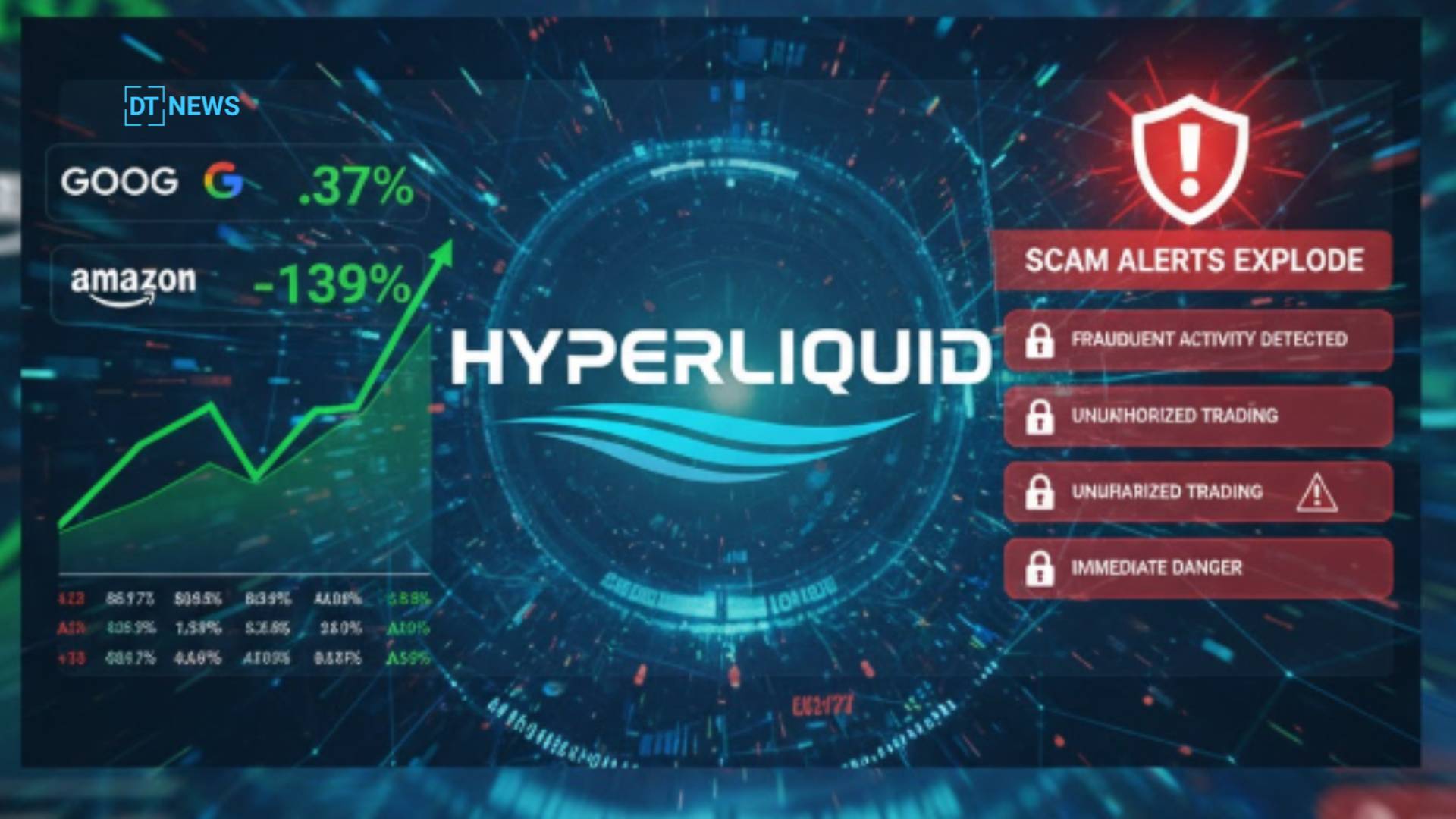This article was first posted on Deythere.
Google and Amazon stock have just stepped deeper into the crypto world. A major on-chain derivatives venue now lists perpetual futures that mirror the price of both companies, so traders gain exposure with crypto collateral instead of buying shares through a traditional broker.
These contracts trade all day, every day. Traditional exchanges close each afternoon, but the new markets keep moving, which shifts part of big tech price discovery into the DeFi arena and lets traders react to earnings, macro headlines, and weekend events without waiting for the opening bell.
How The New Markets Work
The listings are structured as perpetual futures rather than spot shares. Each contract tracks the price of Google (GOOGL) or Amazon (AMZN), and a funding mechanism helps keep the contract price close to the underlying stock level.
Early trading already shows meaningful activity. The Google perpetual has recently traded around 286.78 dollars, with more than 5.25 million dollars in daily volume and over 4.16 million dollars in open interest.
The Amazon perpetual has traded near 224.21 dollars, with roughly 528,000 dollars in 24 hour volume. Both sit alongside existing perpetuals that follow other large technology names such as Apple, Microsoft, Tesla, and Nvidia, giving traders a synthetic tech basket that settles entirely in crypto.
In practice, traders post digital assets as collateral, open long or short positions on these stock-linked contracts, and manage risk using tools that will feel familiar to anyone who already trades Bitcoin or Ethereum perpetuals. The key difference is the underlying reference price, which now comes from two of the most closely watched companies in the global equity market.

Trade.xyz, HIP-3 Tickers, And Incentives
A DeFi layer called Trade.xyz powers these stock style markets. The team has acquired HIP-3 tickers for several major names, paying 500 HYPE tokens for the AAPL symbol and 527.83 HYPE for MSFT. Owning those tickers gives them the right to deploy and manage associated markets in a permissionless way on the core protocol.
HIP-3 is designed as an incentive system. Market creators lock significant HYPE deposits when they launch a ticker. That stake encourages serious projects, discourages spam listings, and links long term behavior to user safety and liquidity growth. The model effectively turns ticker rights into on-chain licenses that must be backed with economic skin in the game.
Why It Matters For Crypto Markets
For crypto native traders, Google and Amazon perpetuals add useful indicators on top of the usual coin charts. Liquidity and open interest reveal how committed traders are to tech exposure on-chain. Rising open interest often signals growing conviction, while thin books may hint at fragile sentiment.
Leverage, which goes up to 10 times on these markets, is another key piece. It can turn modest stock moves into significant profit, but it can also trigger rapid liquidations when volatility spikes. Funding rates, used to keep contract prices aligned with the stocks they track, may show whether long or short positions dominate at any moment.

Correlation is just as important. If Bitcoin, Ethereum, and these stock perpetuals move together during major economic events, it can confirm that crypto prices are now tightly linked to big technology sentiment. That relationship may shape hedging strategies, portfolio construction, and how traders think about risk across both digital assets and equities.
Rising Scam Alerts And Fake Trading Apps
The product expansion is arriving at the same time as a spike in scam activity that targets the same user base. Fake trading apps have appeared in major app stores that copy the interface of the real platform and ask users to enter wallet recovery phrases. Victims who shared those details saw funds drained within a short window, with at least one reported loss near 28,000 dollars.
Legitimate trading tools do not require a full seed phrase for everyday access or simple trades. Any app that asks for complete recovery data should be treated as hostile from the first screen. As DeFi brings traditional assets on-chain, the technical opportunity is growing, but so is the need for strict security habits, careful checks on every download, and a healthy suspicion of anything that appears in an app store without clear verification.
Conclusion
The arrival of Google and Amazon perpetuals on a decentralized platform shows how quickly the wall between traditional finance and DeFi is crumbling. Traders can now rotate between coins, synthetic stocks, and other derivatives without leaving an on-chain environment, using the same wallets and margin systems across all of them.
That freedom comes with responsibility. Liquidity, leverage, and funding rates will set the tone for these markets, but basic security discipline will decide who actually benefits. In the next phase of growth, the traders who win are likely to be those who read the fine print, trust only official tools, and treat every recovery phrase as the keys to a vault, not just another login field.
Frequently Asked Questions
What are Google and Amazon perpetuals?
They are derivative contracts that follow the price of Google or Amazon stock without delivering real shares. They trade 24 hours a day and settle in digital assets such as stablecoins or other crypto collateral.
How much leverage is available on these markets?
The current structure allows up to 10 times leverage, which lets traders control a position ten times larger than the collateral they post. This can increase potential returns but also raises the risk of liquidation during sharp moves.
Why are fake trading apps so dangerous for crypto users?
Fake apps are built to capture recovery phrases or private keys. Once attackers have that information, they can move every asset out of a wallet, and there is no central authority that can reverse the transaction or restore the funds.
Glossary Of Key Terms
Perpetual futures
Contracts with no expiry date that track an underlying asset and use regular funding payments between long and short positions to keep prices aligned with spot.
Open interest
The total value of all open contracts in a market that have not yet been closed or settled. Rising open interest often signals growing participation and stronger conviction.
HIP-3 ticker
An on-chain license that grants the right to deploy and manage a specific market within a decentralized trading ecosystem, usually backed by a locked HYPE deposit to align incentives.
Reference



















































































































